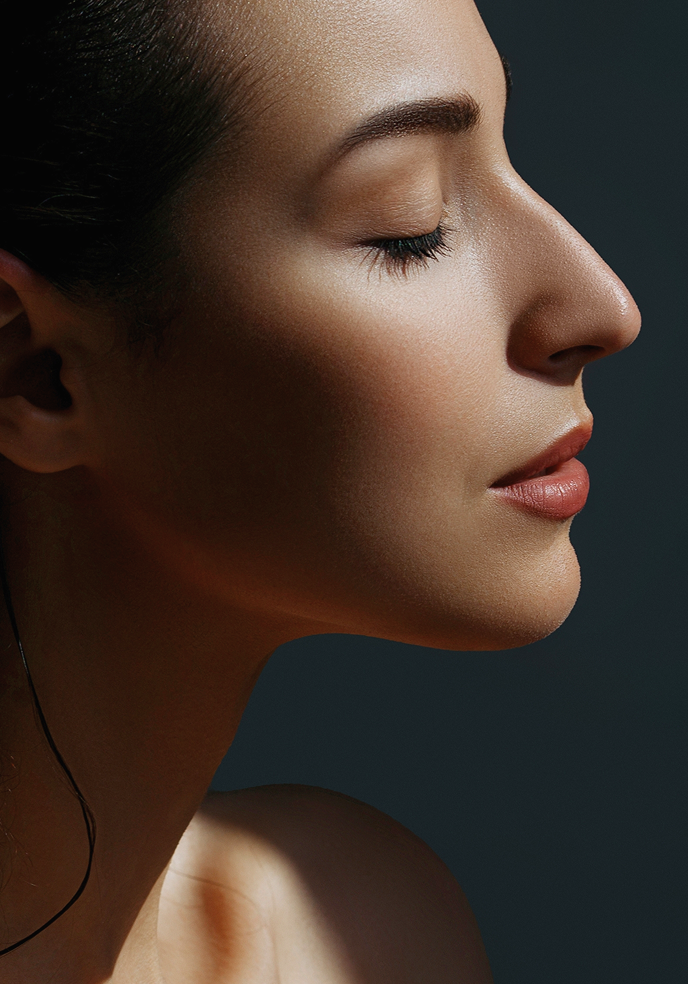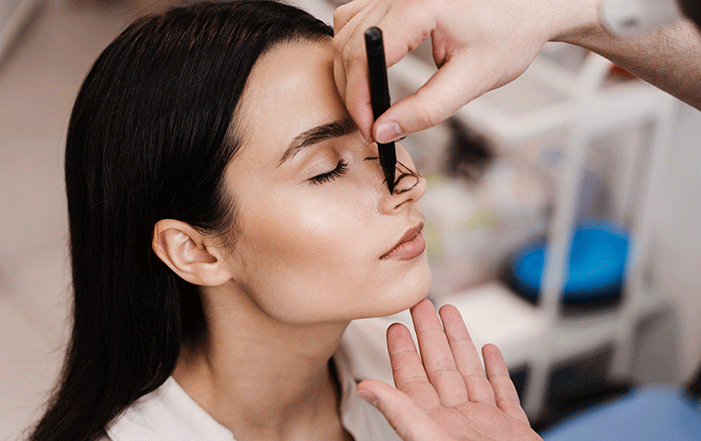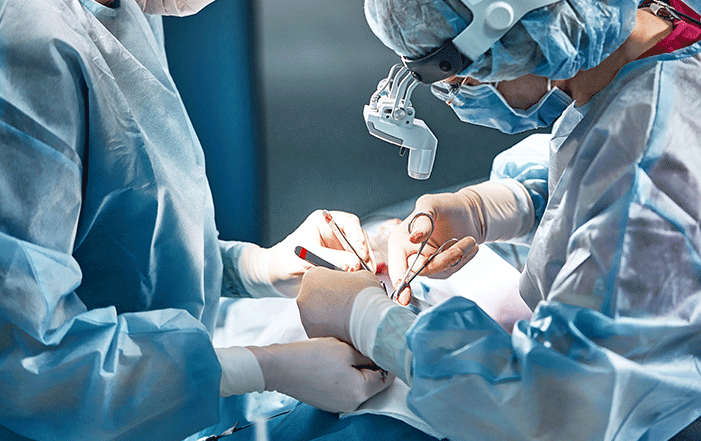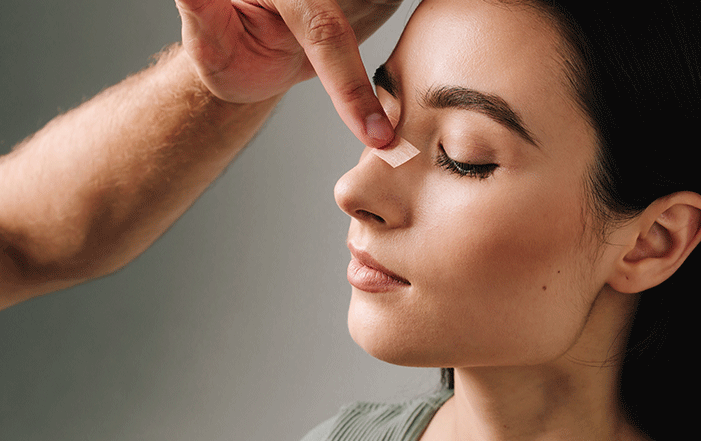Rhinoplasty
Rhinoplasty in Singapore
Whether your refinements are subtle or dramatic, the ideal nose job is one that never looks “done”. Beautiful, natural and proportional are the ultimate objectives. The nose, as one of the most distinguishing facial features, must be addressed with balance and proportion in mind. At our rhinoplasty clinic, we handle rhinoplasties with great care to enhance the appearance and function of the nose so that patients leave our clinic in style and comfort.
Medically Reviewed by Dr Colin Tham
Consultant Plastic & Reconstructive Surgeon
MB ChB (Aberdeen), FRCS (Ireland), FAMS

What Is Rhinoplasty?
Rhinoplasty, commonly referred to as a "nose job," is a cosmetic and functional surgical procedure that reshapes or resizes the nose to enhance facial harmony or improve breathing. It is one of the most popular plastic surgeries worldwide and is sought for a variety of reasons, ranging from aesthetic refinement to medical necessity. The procedure can address issues such as a prominent hump, asymmetry, a wide nasal bridge, a drooping nasal tip, or breathing difficulties caused by structural abnormalities.
Whether performed for cosmetic enhancement or reconstructive purposes, rhinoplasty can significantly transform the balance and proportions of the face. In many cases, even minor adjustments to the nasal structure can lead to improvements in appearance and self-confidence.
Who Should Get a Rhinoplasty?
Rhinoplasty is ideal for individuals who are dissatisfied with the appearance of their nose or experience functional issues that impact breathing or nasal performance. People often consider rhinoplasty to:
- Reduce or increase the size of the nose
- Smooth out a dorsal hump on the nasal bridge
- Refine the nasal tip if it is bulbous, drooping, or upturned
- Narrow the nostrils
- Improve facial symmetry
- Correct a deviated septum
- Repair damage from trauma or previous surgery
While aesthetics are a common motivator, rhinoplasty also plays a vital role in correcting birth defects, restoring the nose after injury, or treating medical conditions like chronic nasal congestion or snoring related to structural problems.
Am I a Suitable Candidate for Rhinoplasty?
Not everyone is an ideal candidate for rhinoplasty. A good candidate is someone who is physically healthy, has realistic expectations, and is seeking improvement rather than perfection. Rhinoplasty is best considered once facial growth is complete—typically around age 15 to 17 for girls and a bit later for boys. Emotional maturity is also important, as the decision to undergo cosmetic surgery should be well thought out and not impulsive.
Candidates should ideally:
- Be unhappy with the size, shape, or function of their nose
- Be in good general health, free from serious medical conditions
- Be non-smokers, or willing to stop smoking before and after surgery
- Understand the risks and limitations of the procedure
- Be committed to following pre- and post-operative instructions
During a consultation, the plastic surgeon will assess facial structure, skin thickness, and nasal anatomy to determine whether rhinoplasty is appropriate and what results can realistically be achieved.
What Are the Types of Rhinoplasty?
There are several different types of rhinoplasty procedures, each tailored to specific goals and patient needs. The primary categories include:
Open Rhinoplasty
Closed Rhinoplasty
Functional Rhinoplasty
Revision Rhinoplasty
Ethnic Rhinoplasty
Non-Surgical Rhinoplasty
What to Expect Before, During, and After Rhinoplasty

Before the Procedure
Your journey starts with an in-depth consultation, where your surgeon will evaluate your facial features, medical history, and surgical goals. Photographs may be taken, and digital imaging can be used to simulate potential outcomes. You will receive personalized recommendations based on your anatomy and expectations.
Prior to surgery, you may be asked to undergo blood tests or imaging and avoid certain medications, such as blood thinners. You should stop smoking and drinking alcohol, as these can interfere with healing. Arrange for someone to drive you home and help during the first 24 to 48 hours of recovery.

During the Procedure
Rhinoplasty is usually performed under general anaesthesia and typically takes 1 to 3 hours, depending on the complexity. After administering anaesthesia, your surgeon will make the necessary incisions (either open or closed), reshape the bone and cartilage, and adjust the nasal structure as needed. If septoplasty or functional corrections are being performed, they will be done during the same session.
Once the reshaping is complete, the incisions are closed, and the nose is covered with a splint or dressing to protect and support the new shape.

After the Procedure
Immediately following surgery, you can expect swelling, bruising, nasal congestion, and mild discomfort. These symptoms peak in the first few days and gradually improve over time. You may also experience some bleeding or drainage, which is normal.
You will wear a nasal splint for about a week, and absorbable or removable stitches may be used. Follow-up visits are scheduled to monitor healing and remove sutures or splints if needed. Most patients are able to return to work and daily activities within 1 to 2 weeks, although full healing and final results may take up to a year to fully develop.
Recovering from a Rhinoplasty
Recovery from rhinoplasty is a gradual process that requires patience and proper care. In the first week, you'll need to rest with your head elevated, avoid strenuous activities, and refrain from blowing your nose. Cold compresses can help reduce swelling and bruising, particularly around the eyes.
After the splint is removed, the majority of swelling will subside within a few weeks, but subtle residual swelling can persist for several months, especially in the nasal tip. Most people notice significant improvement in the nose's appearance within the first few months, with final refinements settling over the course of a year.
To ensure a smooth recovery, it's important to:
- Follow all post-operative instructions provided by your surgeon
- Take prescribed medications as directed
- Avoid touching or bumping your nose
- Protect your nose from sun exposure
- Stay hydrated and eat a healthy diet to support healing
Any signs of infection, excessive pain, or difficulty breathing should be promptly reported to your surgeon.
Frequently Asked Questions

Rhinoplasty Surgeon in Singapore
Dr Colin Tham
Consultant Plastic & Cosmetic Surgeon MB ChB (Aberdeen), FRCS (Ireland), FAMS
Dr Colin Tham is an experienced plastic surgeon skilled in performing all types of rhinoplasties. He is accredited by the Ministry of Health in Singapore and has over 20 years of experience in the field. Dr Tham received extensive plastic surgery training in Scotland, Taiwan, and Singapore; and is committed to providing beautiful and natural-looking outcomes for all his patients.
